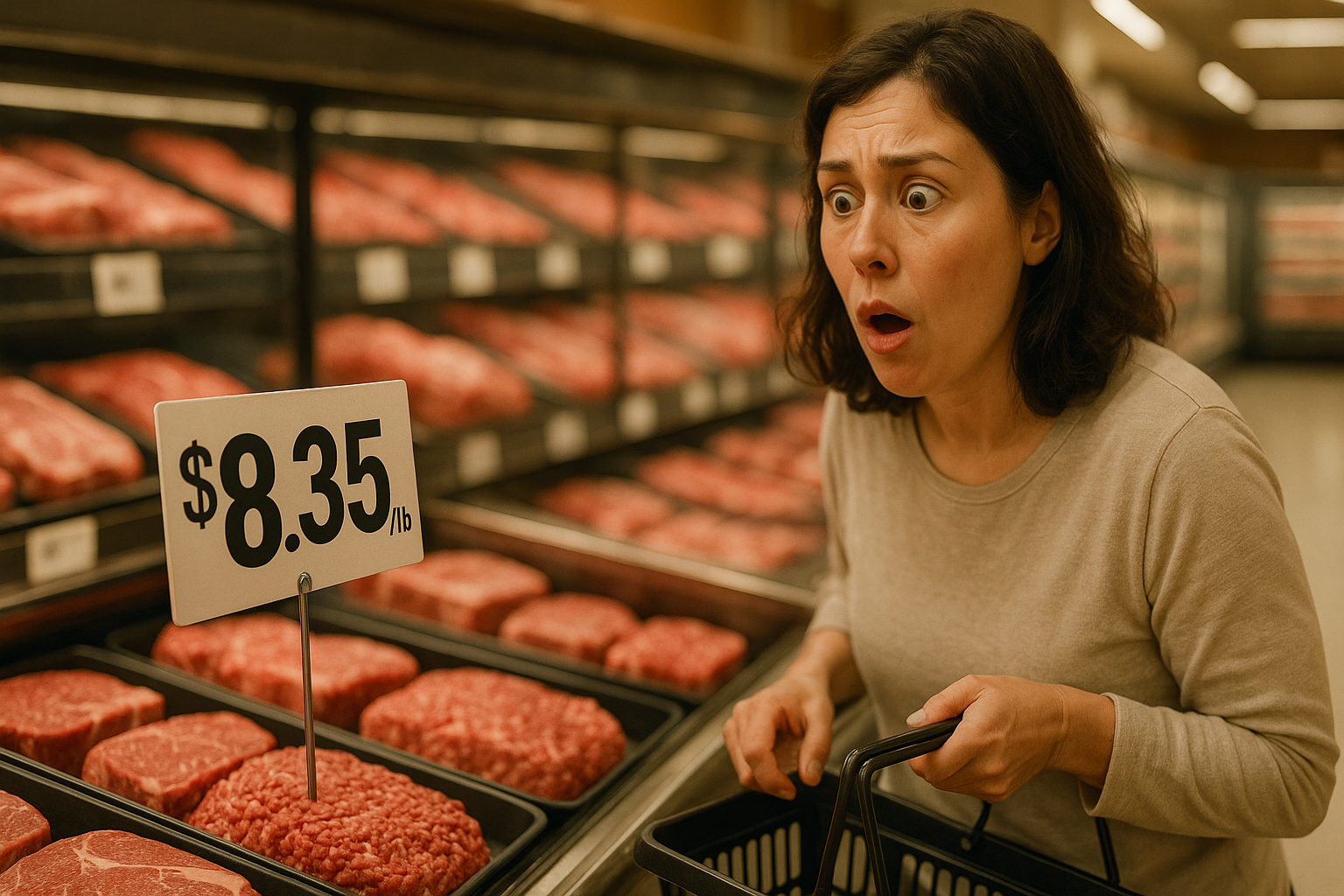The price of beef has gone through the roof, folks. And I'm not talking about some minor bump that makes you grumble at the checkout counter—I mean historical, record-breaking prices that have both consumers and economists doing double-takes at meat department displays nationwide.
Last month, the USDA reported choice beef hitting $8.35 per pound. Eight thirty-five! I remember when premium cuts occasionally broke the $5 barrier and we all thought that was highway robbery.
What in the world is happening?
A Perfect Storm in Cattle Country
The American cattle herd has shrunk to levels we haven't seen since 1951. Think about that—when your grandparents were young adults, that's how few cattle we had roaming the range. But back then, America had roughly half the mouths to feed that we do now.
The drought has absolutely hammered ranching states. I spoke with three multi-generation ranching families in Texas last month, and they all told similar stories: parched pastures, exorbitant feed costs, and painful decisions to sell off breeding stock they'd spent decades developing.
"We had to choose between selling heifers we'd normally keep for breeding or going bankrupt paying for feed," Tom Hargrove told me, standing on cracked earth that should have been lush grazing land.
The thing about beef (and this is what makes it different from, say, manufacturing widgets) is you can't just ramp up production when prices rise. That calf takes about two years to reach slaughter weight. It's biology, not business strategy.
The Surprising Resilience of Beef Demand
Here's what's weird—despite these eye-popping prices, Americans aren't exactly giving up their beef habits.
Demand has remained stubbornly strong. Even with inflation squeezing household budgets in every direction, people are still buying beef. They might grumble. They might buy cheaper cuts. But they're not abandoning beef en masse.
Having covered food economics since the pandemic began, I've noticed this pattern repeatedly: when it comes to culturally significant foods, consumers will sacrifice elsewhere before changing deeply ingrained eating habits.
Look, there's something almost primal about Americans' connection to beef. Backyard barbecues, celebratory steaks, the classic burger—these aren't just meals, they're cultural touchstones.
The Middleman's Windfall
Now, here's where things get interesting (and infuriating if you're a cattle producer). You might think ranchers are making out like bandits with these high prices, right?
Wrong.
The meat processing industry—dominated by just four companies that control roughly 85% of beef processing—creates a choke point where much of the profit accumulates. It's as if someone installed a toll booth between the ranch and your grocery store.
I've spent time with ranchers in Montana and Oklahoma who are barely breaking even despite selling into the hottest beef market in generations. Meanwhile, the processing giants have enjoyed record profits in recent years (though even they are feeling the squeeze of higher operational costs now).
Wider Economic Ripples
The beef situation offers a fascinating window into our broader economic challenges.
For one, it shows how climate change isn't some abstract future threat—it's already reshaping our economy through drought impacts on agriculture. It demonstrates how industry concentration can amplify price volatility rather than dampen it. And perhaps most importantly for policymakers, it highlights the limitations of traditional economic tools.
The Federal Reserve can't make it rain in cattle country. Jerome Powell can fiddle with interest rates all he wants, but that won't put more calves on the ground any faster.
(And yet, ironically, food prices drive inflation expectations among consumers more than almost any other factor. We might not buy a refrigerator or car very often, but we notice food prices every week.)
Adapting to the New Beef Economy
Restaurants—already operating on notoriously thin margins—are in a particularly tough spot. I dropped by Grill 23, a popular steakhouse in Boston, where the manager (who preferred to remain unnamed) showed me their pricing adjustments over the past two years. Their signature ribeye has jumped nearly 40% in price.
"We can't just keep raising menu prices indefinitely," he told me. "So we're getting creative—smaller portions, different cuts, more elaborate preparations of less expensive options."
This creativity extends to home kitchens too. Those tough-but-flavorful cuts your grandmother knew how to transform? They're having a renaissance. Suddenly, knowing how to properly braise a chuck roast seems like financial wisdom rather than just culinary knowledge.
When Will Relief Come?
Not soon, unfortunately. The cattle cycle suggests we're in for at least another 18-24 months of elevated prices.
Rebuilding herds takes time, especially when ranchers remain understandably gun-shy about expansion. One bad drought could wipe out their investment, and climate models suggest increased weather volatility is our new normal.
For investors, agricultural commodities—particularly cattle futures—have outperformed many traditional investments. But the real money might be in adjacent plays: companies developing feed alternatives, land with secure water rights, or even restaurant chains that successfully navigate the high-cost environment.
The Bottom Line on Your Bottom Dollar
So what's a beef-loving consumer to do?
Well, for starters, embrace flexibility. Those cheaper cuts—brisket, chuck, round—can be magnificent when prepared properly. Consider the "meat as condiment" approach that many global cuisines have long employed—where beef adds flavor to a dish rather than dominating the plate.
And perhaps... just perhaps... this might be the moment when alternative proteins get their real shot. Not because of clever marketing or environmental concerns, but because of the most powerful force in economics: relative price.
When a pound of ground beef costs more than two pounds of chicken or a family-sized pack of plant-based alternatives, even the most dedicated carnivore might experiment with alternatives.
I've been watching food trends for over a decade, and if there's one constant, it's that Americans are remarkably adaptable when their wallets are on the line.
So next time you get sticker shock at the meat counter, remember—you're witnessing a complex economic drama playing out on your dinner plate. And unfortunately, this particular show doesn't look like it's closing anytime soon.
